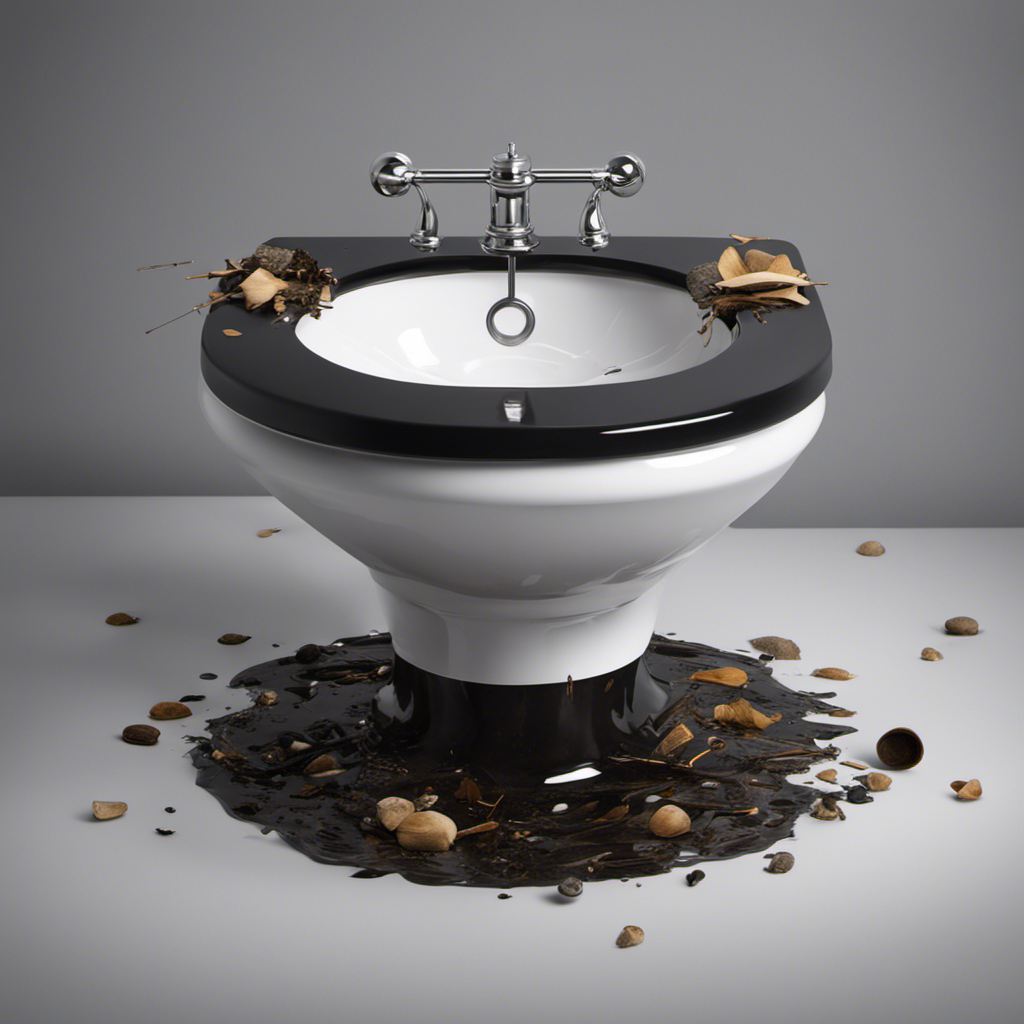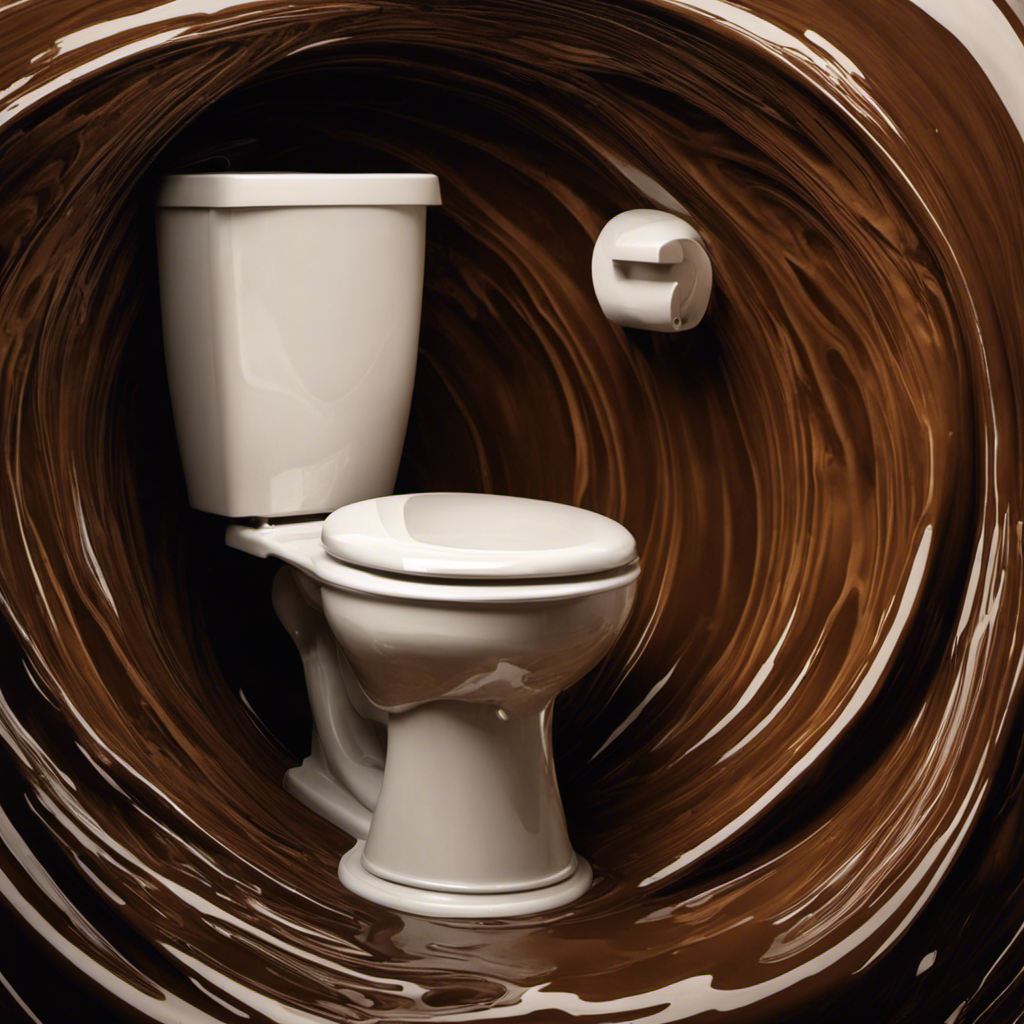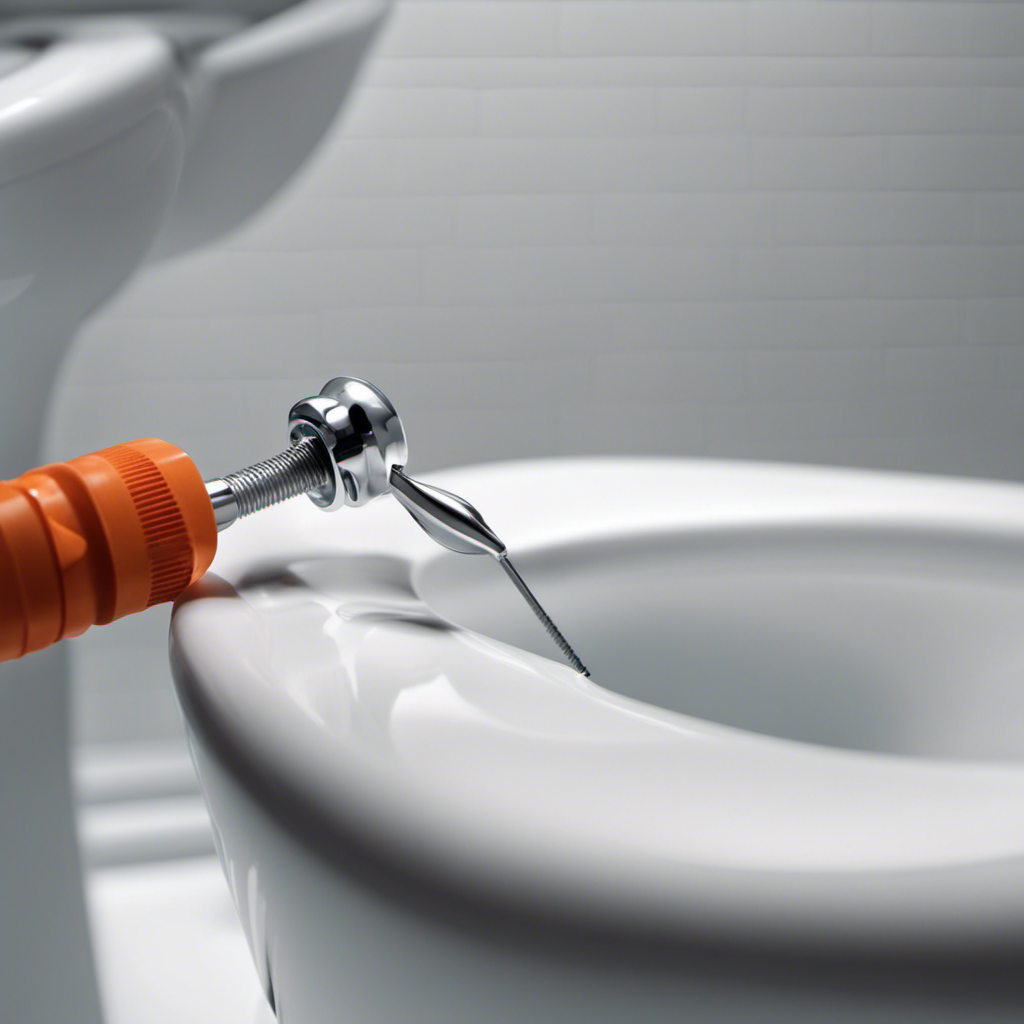Did you know that a non-flushing toilet is one of the most common household plumbing problems? If you’ve ever experienced the frustration of a toilet that won’t flush, you’re not alone.
In this article, I’ll walk you through the common causes of this issue, help you understand how toilet flush mechanisms work, and provide troubleshooting tips to fix a weak flush or unclog a stubborn drain.
Get ready to regain control of your bathroom with these simple solutions.
Key Takeaways
- Excessive use of toilet paper can clog the drain and prevent proper flushing.
- Low water pressure in the toilet tank can result in a weak flush.
- A malfunctioning flush valve can cause incomplete or weak flushing.
- The plunger method can be used to unclog the toilet drain.
Common Causes of a Non-Flushing Toilet
One common cause of a non-flushing toilet is if you’ve recently used too much toilet paper. When you flush the toilet, the water from the toilet tank is released into the bowl, creating a force that pushes the waste down the drain. However, if there is too much toilet paper in the bowl, it can clog the drain and prevent the water from flowing properly.
Another common cause of a non-flushing toilet is low water pressure in the toilet tank. The water pressure is responsible for creating the force needed to flush the waste. If the water pressure is too low, it may not be strong enough to push the waste down the drain, resulting in a non-flushing toilet.
To fix this issue, you can try using less toilet paper or adjusting the water pressure in the toilet tank.
Understanding Toilet Flush Mechanisms
The most common toilet flush mechanisms use a combination of water pressure and gravity to clear waste. The toilet flush handle mechanism is an essential part of this process. When you press the handle, it lifts a chain or rod connected to the toilet flush valve.
This valve opens, allowing water to rush from the tank into the bowl, creating a siphon effect that carries away waste. However, a toilet flush valve malfunction can occur, preventing proper flushing. This can happen if the valve is stuck in the closed position or if it fails to seal properly, resulting in a weak or incomplete flush.
In such cases, it is important to fix or replace the faulty flush valve to ensure the toilet functions properly.
Troubleshooting a Weak Flush
If your toilet’s flush seems weak, it could be due to a faulty flush valve. The flush valve is responsible for releasing water from the tank into the bowl to create a strong flush.
Over time, the flush valve can become worn or damaged, causing a decrease in flushing power. To troubleshoot this issue, start by checking the toilet flush handle. Make sure it is properly connected and functioning. If the handle is loose or broken, it may not be able to activate the flush valve properly.
Additionally, you can adjust the water level in the tank to improve the flush. Locate the water level adjustment screw or float and adjust it to the recommended level.
Dealing With Clogs in the Toilet Drain
Dealing with clogs in the toilet drain can be frustrating, but there are a few methods you can try to unclog it. Here are two effective techniques to help you get the job done:
-
Plunger Method:
-
Ensure there’s enough water in the bowl to cover the plunger.
-
Place the plunger over the drain hole and firmly push down, creating a seal.
-
Vigorously plunge up and down for about 20 seconds.
-
Repeat if necessary until the clog is cleared.
-
Hot Water and Dish Soap Method:
-
Boil a pot of water on the stove.
-
Add a generous amount of dish soap to the toilet bowl.
-
Carefully pour the hot water into the bowl from waist height.
-
Let it sit for a few minutes.
-
Flush the toilet to see if the clog is gone.
How to Fix a Toilet That Won’t Flush
Having trouble with a toilet that won’t flush? Here’s what you can do.
One common cause of a toilet not flushing properly is a faulty toilet flapper. The toilet flapper is a rubber valve that controls the water flow from the tank to the toilet bowl. If the flapper is worn out or damaged, it may not create a proper seal, resulting in a weak flush or no flush at all.
To fix this issue, you can try replacing the toilet flapper. Start by turning off the water supply to the toilet and draining the tank. Remove the old flapper and install a new one according to the manufacturer’s instructions.
Another possible cause of a toilet not flushing is a low water level in the tank. Ensure that the water level is at the recommended mark to ensure a proper flush.
Conclusion
So there you have it, a detailed guide on why your toilet may not be flushing and how to fix it.
Remember, the most common causes are issues with the flush mechanism or clogs in the toilet drain. By understanding how your toilet flushes and troubleshooting the problem, you can save yourself from a potentially messy situation.
Did you know that according to a study, approximately 25% of toilet flushing problems are caused by clogs in the drain?
Don’t let a non-flushing toilet ruin your day, use the information in this article to tackle the issue head-on and get your toilet back up and running smoothly.










